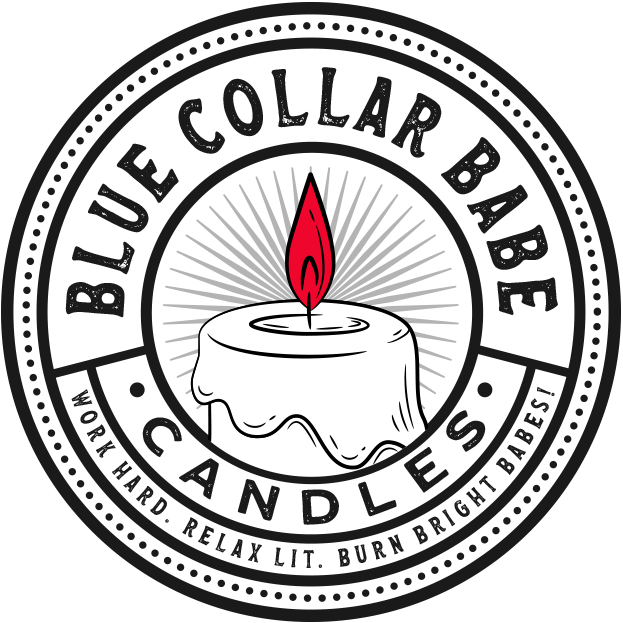Building More Than a Career: A Candid Conversation with a Woman Leading the Way in Construction
What first drew you into the skilled trades — was it passion, rebellion, or a happy accident?
Landing in construction was a happy accident. In my mid-20s, I was working as a data analyst and call center supervisor while going to school for audio/visual production. I wasn’t fulfilled. The company culture wasn’t great, and any opportunity for growth required a degree I didn’t have.
When I found out I was pregnant and uninsured, I knew something had to change. My boss at the time was also planning her exit and shared a job listing for a dispatcher at a local plumbing, HVAC, and electrical company. I had no idea what the role entailed, but I applied anyway. Within hours, I had an interview. After three rounds, they hired me for customer service with the promise of leading the call center eventually.
I spent the next 18 months scheduling service calls and building reports, relying on my data background to survive some tough customer interactions. But after being passed over for the supervisor role in favor of someone with zero call center experience, I was ready to walk out — until one of the sales guys stopped me and said, “Let’s figure something else out.”
That conversation shifted everything. I moved into a coordinator role supporting commercial plumbing, HVAC installs, and excavation. That was the turning point. I knew then that I wanted to stay in this industry and build something meaningful.
First tool you ever held vs. the one you never leave home without?
As a woman in construction on the admin side, my first real tool wasn’t a hammer or a Sawzall — it was a fierce little Excel spreadsheet. And honestly? Excel still runs my world. I use it to track job costs, technician KPIs, service contracts, P&Ls, inventory, fleet management — you name it. While others are swinging hammers, I’m over here slaying formulas and color-coded tabs like it’s an art form.
Describe your journey in three words.
Determined. I pushed forward, even when the odds weren’t in my favor.
Connected. I found strength and guidance in community.
Inspired. My experience is leading me to create something bigger and more empowering.
What does being a NAWIC Chapter President mean to you?
Being a NAWIC Chapter President means being a bridge — between generations, between field and office, and between women just finding their place and those who’ve held it down for decades. It’s not just a title; it’s a responsibility to lead with purpose, create space, and lift others up.
I wish more people knew that you don’t have to be perfect or have it all figured out to lead. It’s about showing up, listening, organizing events, mentoring, advocating for inclusion, and sometimes just saying, “You’ve got this.” It’s work — but it matters. Because when women see leadership that looks like them, it opens the door for them to step forward too.
Your most rewarding “I’m exactly where I’m supposed to be” moment?
Being asked to join the planning committee for the Women in Construction Luncheon — the same event I spoke on a panel for the year before — was a full-circle moment. Our NAWIC chapter was one of the main sponsors, and I was honored to MC the event.
Standing on that stage, looking out into the crowd with more confidence than I’d had a year prior, made me realize how far I’d come. Making students and peers laugh, sharing space with incredible women in my community, and hearing their stories reminded me exactly why I do this work.
Ever have an “I can't believe this is my life” moment?
Absolutely. Maybe not in my day-to-day lately, but with NAWIC? All the time. I’m starting to find my space in this industry, and NAWIC has opened so many doors — jobsite tours, magazine features, podcast interviews, and connecting with incredible women like Barb Allen and Delia Ray. These women, along with my chapter sisters, have helped me find my confidence and voice.
Even casual moments inspire me — like scrolling social media and seeing tradeswomen building side businesses and showing up in such real, creative ways. It pushes me to keep going.
What’s the biggest myth about women in construction that NAWIC helps bust?
That we don’t belong here. NAWIC supports women in every role — from the field to the boardroom. Through mentorship, programs, and advocacy, we’re proving every day that women are essential to the future of construction. We’re not just here; we’re leading the way.
How do you balance advocacy, leadership, and the chaos of running a chapter?
I don’t always have it together — and that’s okay. What keeps me going is my passion for this industry and my determination not to let others down. I’m a single mom to an 11-year-old (who thinks he’s 17), going back to school for Construction Management. It’s a lot. Women carry so much — schedules, expectations, pressure. But we bounce back. Seeing other women out there building businesses and breaking barriers reignites my fire. It reminds me why I’m here.
What would you say to a woman curious about the trades but intimidated?
You don’t need to grow up with a wrench in your hand to belong in this space. Every expert you see started with a first time, first tool, first mistake, first win.
The trades are about problem-solving, creativity, and building something that lasts. Whether you’re swinging a hammer or running a jobsite, there’s room for you here — exactly as you are.
Your response to “Construction isn’t for women”?
Neither were voting booths, boardrooms, or bank loans — until we showed up and changed that.
What’s the most unexpected skill that’s helped you succeed?
Patience. I’ve always craved instant results, but this industry has taught me that real success takes time. I’ve learned to listen, to respect boundaries, and to be the calm in the storm. Leadership means showing up with clarity and compassion, even when things get tough.
Favorite “you can’t make this up” job story?
One time I was managing a gas line project, and our techs were checking sewer lines to make sure no gas lines had been bored through them. At one house, the floor drain had backed up with sewage. Instead of calling someone or cleaning it up, the homeowners built a bridge over the sewer water in their basement — and just walked across it like it was no big deal.
One change you’d love to see in the next five years?
I’d love to see trade programs introduced as early as grade school — led by women. Representation matters. I also want to see stronger relationships between women in the field and office and more companies investing in leadership training for women. We’re not just joining the industry; we’re ready to lead it.
How does your chapter create space for community and fun?
We’re intentional about connection. The Greater Omaha NAWIC Chapter isn’t just a professional group — we’re a support system. From jobsite tours and workshops to taco nights, baseball games, Galentine’s parties, and candle-making, we make space for growth and joy.
Even our meetings include laughter. Because connection is what keeps us strong.
Who inspires you?
Women — in and out of hard hats — inspire me every day. We’re still fighting for a seat at the table, and it’s the women who keep showing up that fuel me.
But my biggest inspiration? My son. He’s walked this journey with me — from parades to project setups, quietly supporting from the sidelines. He reminds me why I keep going.
What do women need to hear more about careers in the trades?
That this isn’t a fallback. It’s a future. Whether you’re an electrician, project manager, or estimator — women belong here. And we don’t have to change who we are to fit in. The industry needs us — our perspective, our drive, our leadership — just as we are.
How do you define success?
Success isn’t about titles or tools. It’s about impact. It’s about how many people you lift up, how many voices you help amplify, and how many doors you hold open. If another woman feels confident because of something I shared or built — that’s success.
 What legacy do you want to leave?
What legacy do you want to leave?
I want to leave a foundation that’s stronger, safer, and more inclusive. One where women see themselves represented and never feel the need to shrink to fit in.
I want my legacy to be one of action — mentorship, opportunity, and a culture that doesn’t just welcome women but rises because of them.
The trades are facing a serious shortage. How does that impact you?
We’re at a pivotal moment. It’s not just about filling jobs — it’s about transforming an industry. We need to stop just saying we want more women and start backing that up with systems, support, and leadership that truly hears them.
I’ve seen what sisterhood and mentorship can do. But I’ve also seen silence push women out. We need real hands, real skills, and real talk — because without that, we’re just patching a broken system.
What actionable solutions can help get more women and youth into the trades?
Start with early exposure — bring skilled trades into schools, and make those programs inclusive and led by diverse professionals. Modernize the image of construction. Invest in internships, mentorships, and leadership programs. Provide gear that fits, workplaces that are safe, and spaces where women can speak honestly.
Visibility. Opportunity. Accountability. They must work together — because that’s how we build a better future.
The U.S. is facing a talent shortage of skilled tradespeople, which could have serious implications for the economy. As high demand for qualified workers increases, it offers women ample opportunities to obtain stable jobs.
“There are about 650,000 workers missing from the construction industry, and construction backlogs are now at a four-year high,” Maria Davidson, CEO and founder of Kojo
We'd love to hear your thoughts!
If this post resonated with you, sparked an idea, or raised a question—drop a comment below. Let’s spark real conversations that matter. If this hit home, share it with someone who gets it.







